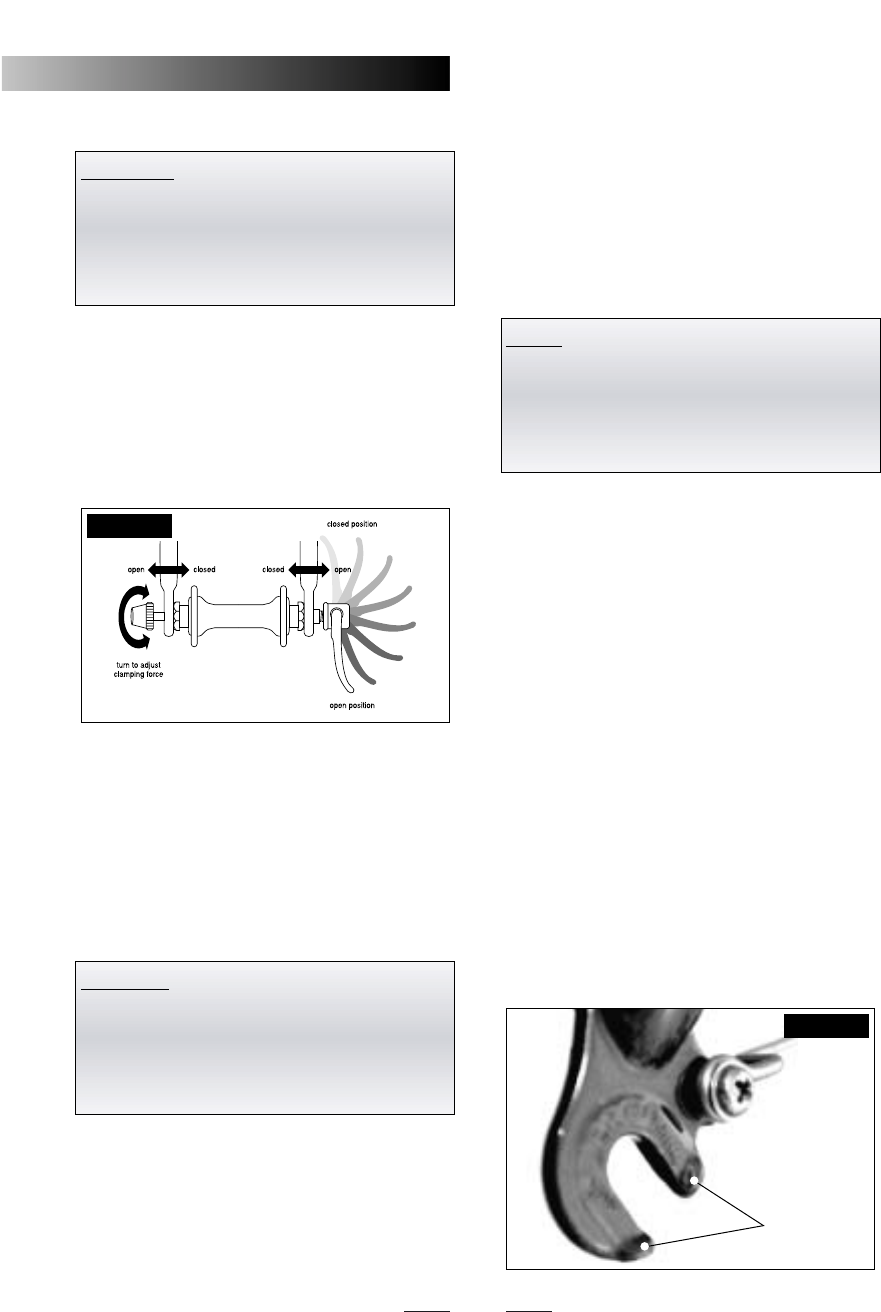
57
6.3 Front wheel quick release
6.3.1 General
WARNING:
Riding with an improperly adjusted wheel
quick-release can allow the wheel to wobble or
disengage from the bicycle, which may cause
damage to the bicycle and serious injury to the
rider. Therefore, it is essential that you:
a. ask your dealer for assistance in installing
and removing your wheels safely
b. understand and apply the correct
technique for clamping your wheel in place
with a quick-release
c. check that the wheel is securely clamped
in the fork before each and every ride.
Because of its adjustable nature, it is critical
that you understand how a quick-release
lever cam works and how to use it properly.
While it may appear at first glance to be a nut
and bolt configuration (a long bolt with a lever
on one end and a nut on the other), in fact the
wheel quick-release uses a cam action to
clamp the bike’s wheel in place (see fig. 19).
CAUTION:
Holding the nut with one hand and turning the
lever like a wing nut with the other hand until
tight will not clamp the wheel safely in the
dropouts. The full force of the cam action is
needed to clamp the wheel securely.
6.3.2 Adjusting the quick-release
mechanism
The wheel’s hub is clamped in place by the
force of the quick-release cam pushing
against one dropout and pulling the tension
adjusting nut, by way of the skewer, against
the other dropout. The amount of clamping
force is controlled by the tension adjusting
nut. Turning the tension adjusting nut
clockwise while keeping the cam lever from
rotating increases clamping force; turning it
anti-clockwise while keeping the cam lever
from rotating reduces clamping force. Less
than half a turn of the tension adjusting nut
can make the difference between safe
clamping force and unsafe clamping force.
NOTE:
Once the quick-release is installed in the hub
axle by the manufacturer or the dealer, it
never needs to be removed unless the hub
itself requires servicing. If the hub requires
servicing, consult your dealer.
6.3.3 Front wheel secondary
retention devices
Lafree Twist is equipped with a secondary
wheel retention device (see fig. 20) to keep
the wheel from disengaging if the quick-
release is incorrectly adjusted or the cam
opens accidentally. Secondary retention
devices are not a substitute for correct quick-
release adjustment.
The secondary retention device is integral with
the fork dropouts and is recessed for the
quick-release lever that keeps the wheel from
dropping out of the fork’s dropouts should the
quick-release lever open accidentally.
However, these tabs are not designed to keep
the wheel in place should the quick-release
lever open accidentally. If you hear or feel
looseness coming from the front wheel, stop
riding immediately and check the quick-release
tension. Ask your dealer to explain Lafree’s
secondary retention device in more detail.
FIG. 19
FIG. 20
Secondary
retention
device


















